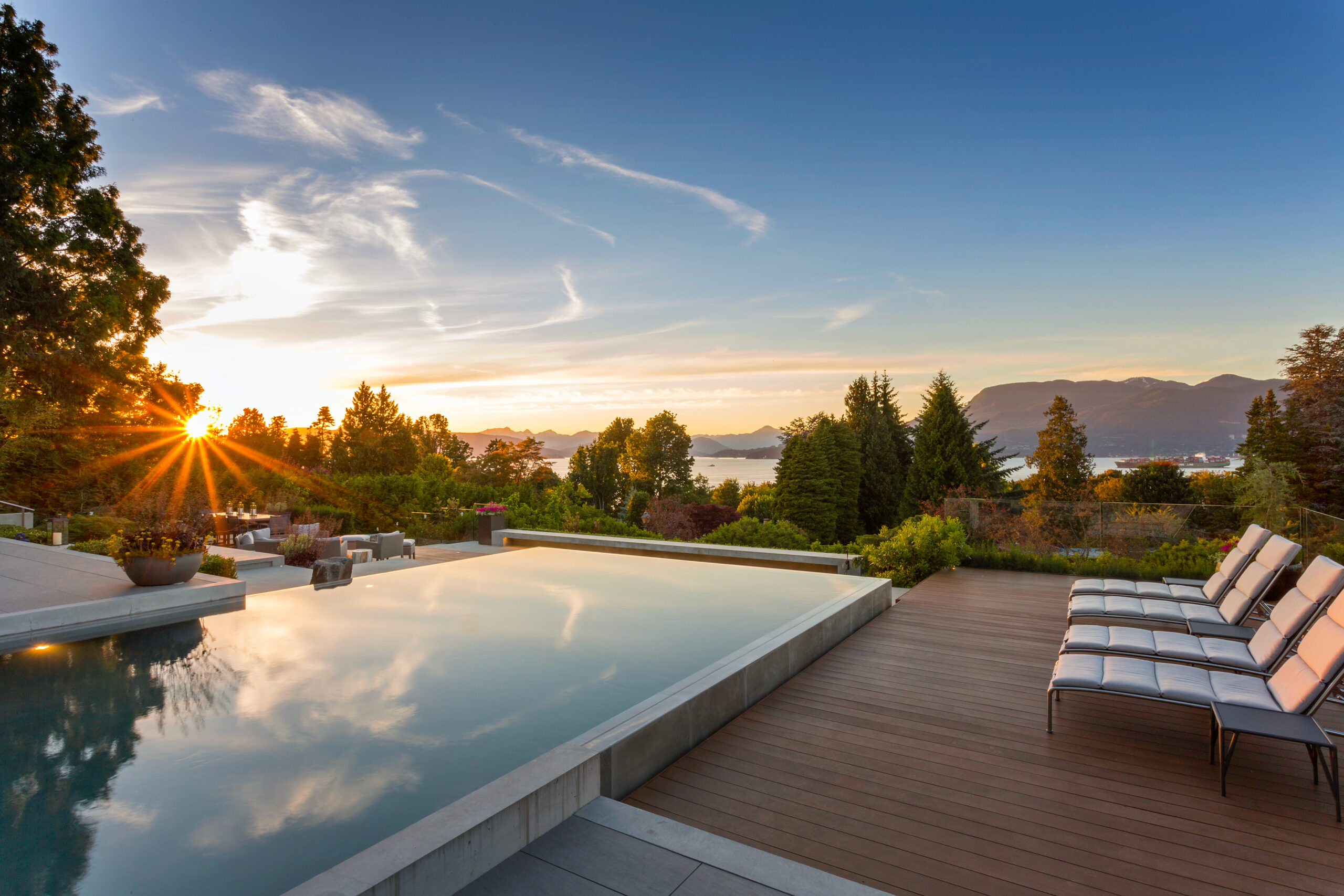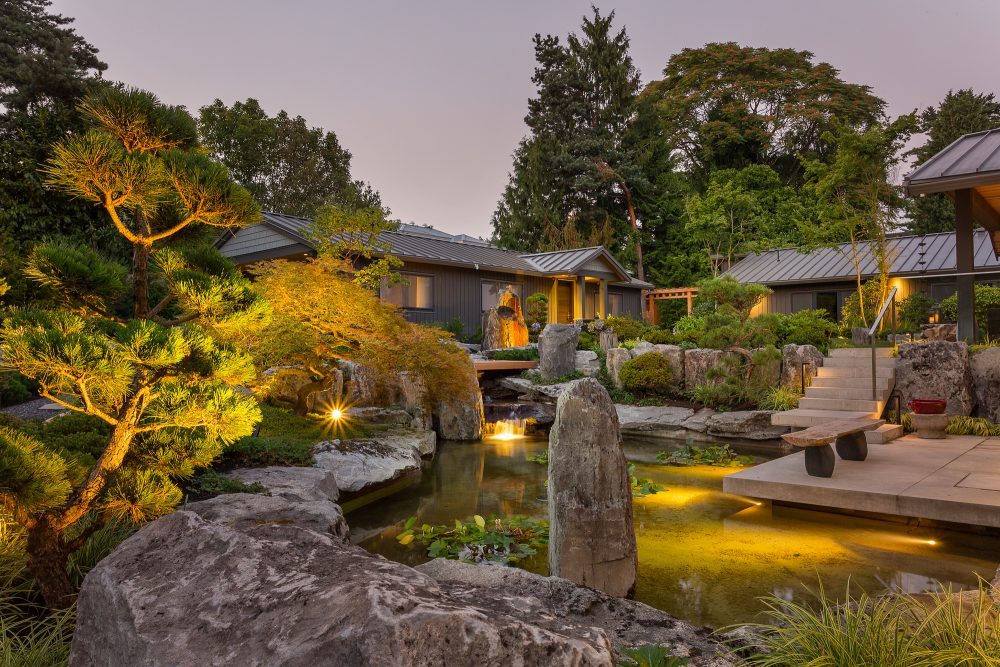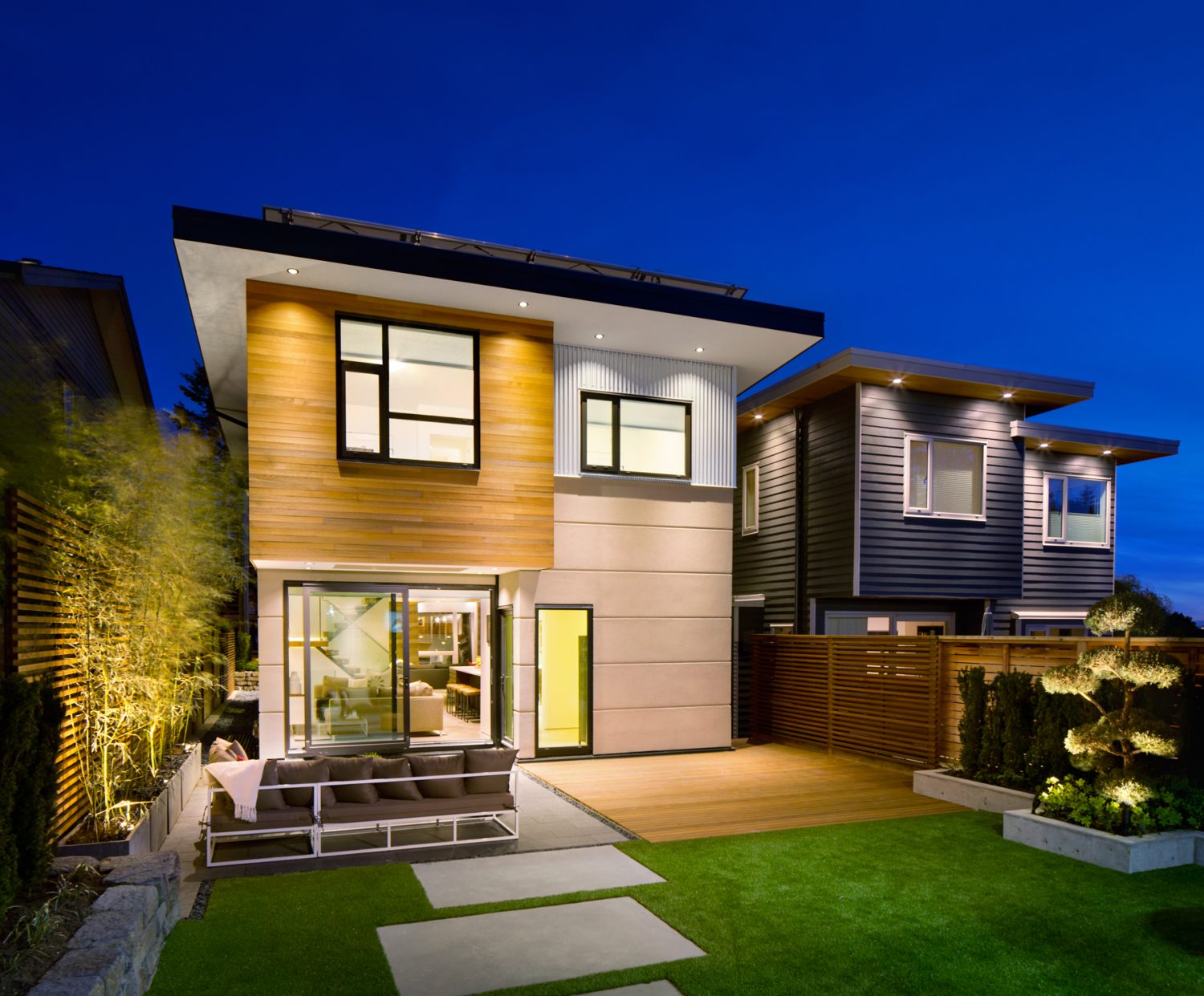Landscape Construction
Swick’s Landscaping offers comprehensive landscape construction services to bring your landscape design to life.
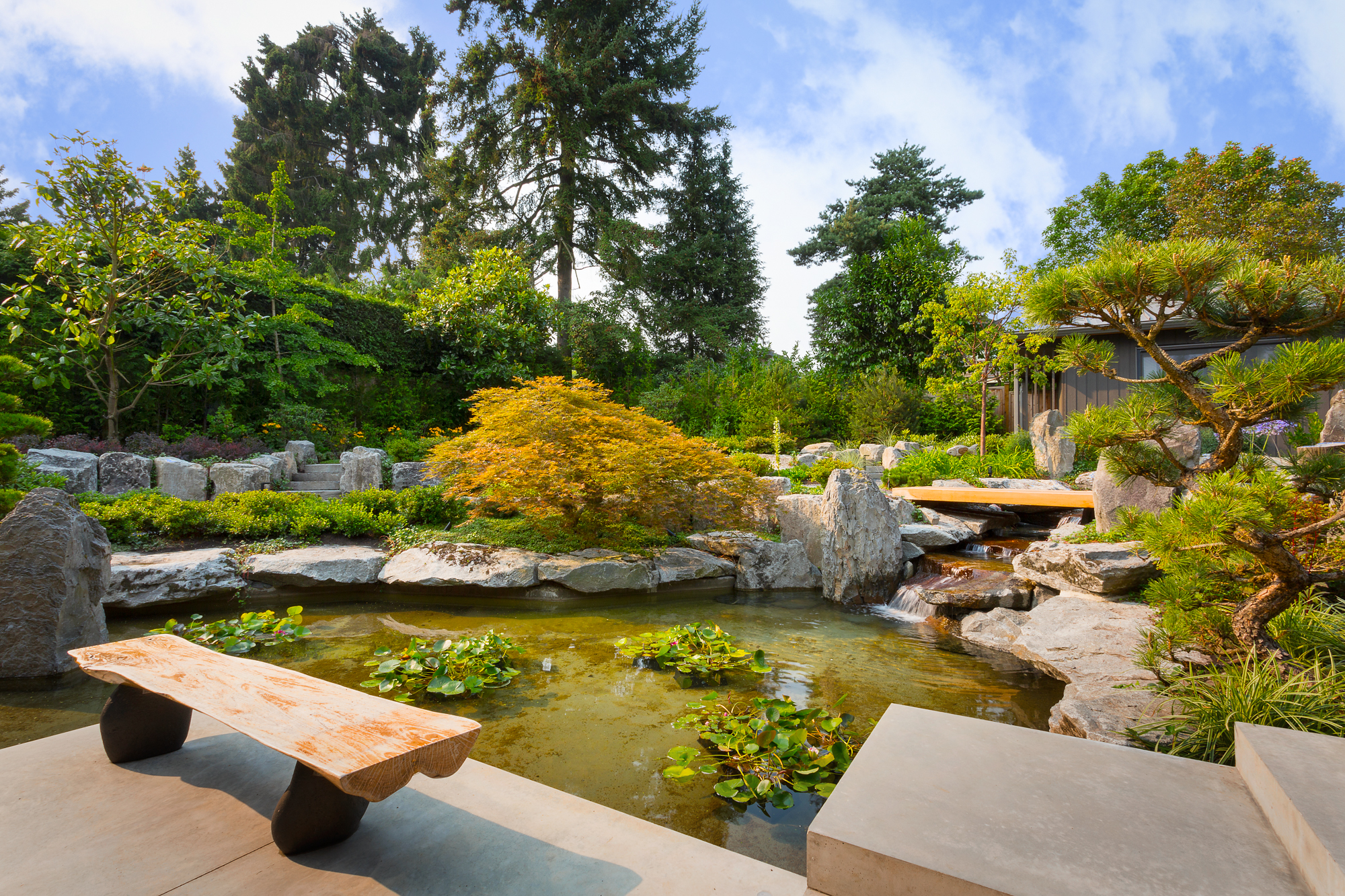
Our team is equipped with the knowledge, tools, and experience to ensure your project is executed to the highest standards.
Contact us for a detailed overview of our construction services:
- Site Preparation
- Site Analysis
- Evaluate the site’s topography, soil composition, drainage patterns, sun exposure, and existing vegetation to inform design decisions and construction plans.
- Site Clearing
- Remove any existing vegetation, debris, rocks, or structures from the site to create a clean and clear area for construction activities. This may involve tree removal, brush clearing, and demolition of existing features.
- Grading and Excavation
- Grade the site to create the desired slopes, contours, and elevations for drainage, access, and aesthetics. Excavate areas for features such as ponds, terraces, retaining walls, and foundations.
- Utility Identification and Marking
- Identify and mark the location of underground utilities such as gas lines, water pipes, electrical cables, and septic systems to avoid accidental damage during excavation and construction.
- Utility Installation
- Install new utilities or modify existing ones as needed for
irrigation systems, outdoor lighting, drainage solutions, water features, and other landscape elements. This may involve trenching, laying pipes, and connecting fixtures.
- Install new utilities or modify existing ones as needed for
- Soil Preparation
- Amend the soil as needed to improve its structure, fertility, and drainage. This may involve adding organic matter, compost, sand, or other soil amendments to create an optimal growing environment for plants.
- Site Analysis
- Hardscape Installation
- Patios and decks
- Patios are ground-level outdoor spaces made of materials like concrete, brick, or stone, ideal for relaxation or entertaining. Decks are elevated platforms attached to the house, typically made of wood or composite materials, offering a higher perspective and additional outdoor living space.
- Click here for more information and photos
- Walkways and pathways
- Walkways and pathways are designed for pedestrians to navigate outdoor spaces. Walkways are typically paved, while pathways may be more natural, using materials like gravel or stepping stones. They enhance accessibility and aesthetics in gardens, parks, or residential landscapes.
- Click here for more information and photos
- Retaining walls
- Retaining walls are structures built to hold back soil and prevent erosion in landscapes with sloped or uneven terrain. They’re often made of materials like concrete blocks, bricks, or natural stone, and can be both functional and decorative. Retaining walls help create usable outdoor spaces, prevent soil movement, and add visual interest to gardens and yards.
- Click here for more information and photos
- Driveways
- Driveways are paved or gravel pathways leading from the street to a residence or building, providing access for vehicles. They are typically constructed using materials like concrete, asphalt, gravel, or pavers, and can vary in length and width depending on the property’s layout and parking needs. Driveways enhance convenience and curb appeal while serving as a functional element of residential or commercial properties.
- Click here for more information and photos
- Pavers and stone installation
- Pavers and stone installation involves laying down interlocking pieces of concrete, clay, or natural stone to create durable and visually appealing surfaces. This process typically includes excavation, base preparation, laying the pavers or stones in a desired pattern, and securing them with joint sand or mortar. Pavers and stone installation can be used for various outdoor applications such as patios, walkways, driveways, and pool decks, providing a customizable and long-lasting solution for enhancing outdoor spaces.
- Click here for more information and photos
- Pool Decks
- Pool decks are the surrounding areas of a swimming pool that provide space for lounging, sunbathing, and outdoor activities. They are typically constructed using materials like concrete, pavers, wood, or composite decking, and are designed to withstand exposure to water and sunlight. Pool decks can be customized in size, shape, and style to complement the pool and surrounding landscape, offering a safe and functional surface for relaxation and entertainment.
- Click here for more information and photos
- Fencing and gates
- Fencing and gates are essential features of outdoor spaces, providing privacy, security, and defining property boundaries. Fences are constructed using materials like wood, vinyl, metal, or composite materials, and can vary in height, style, and design based on preferences and needs. Gates serve as entry points and are often integrated into the fence structure, allowing controlled access to the property. Both fencing and gates enhance safety and aesthetics, adding character and value to residential and commercial properties.
- Click here for more information and photos
- Patios and decks
- Water Features
- Ponds, Water Gardens & Water Features
- Designing, installing, and maintaining ponds, water gardens, and various water features such as bubblers, bubbling rocks, and reflecting pools. These features add tranquility, visual interest, and habitat diversity to outdoor spaces.
- Fountains
- Designing and installing decorative fountains, ranging from small tabletop fountains to large-scale focal points in residential and commercial landscapes. Fountains add elegance, movement, and soothing sounds to outdoor environments.
- Streams and Waterfalls
- Creating naturalistic streams and waterfalls that mimic the beauty and serenity of natural watercourses. These features provide visual and auditory interest, as well as habitat for aquatic plants and wildlife.
- Swimming Pools & Spas
- Designing, constructing, and renovating swimming pools and spas to create luxurious outdoor retreats for relaxation, recreation, and socializing. Services may include custom designs, water features, lighting, and integrated landscaping for seamless integration with the surrounding environment.
- Ponds, Water Gardens & Water Features
- Outdoor Living and Multi-Use Space
- Gazebos and Pergolas
- Gazebos and pergolas are freestanding structures designed to provide shade, shelter, and architectural interest in outdoor spaces. They can be used as focal points in the landscape or as functional areas for dining, entertaining, or relaxing.
- Outdoor Kitchens
- Outdoor kitchens are equipped with cooking appliances such as grills, smokers, pizza ovens, and sinks, allowing homeowners to prepare meals and entertain guests outdoors. They often include countertops, storage cabinets, and seating areas.
- Fire Pits and Fireplaces
- Fire pits and fireplaces are popular features in outdoor living spaces, providing warmth, ambiance, and a focal point for gathering and socializing. They can be built-in or portable and fueled by wood, gas, or propane.
- Swimming Pools and Spas
- Swimming pools and spas are major elements in outdoor living spaces, providing opportunities for recreation, exercise, and relaxation. They can be inground or aboveground, heated or unheated, and customized with features such as waterfalls, fountains, and lighting.
- Play Areas and Playgrounds
- Play areas and playgrounds are designed for children’s enjoyment and physical activity in outdoor spaces. They may include features such as swings, slides, climbing structures, sandboxes, and playhouses.
- Garden and Landscaped Areas
- Gardens and landscaped areas enhance outdoor living spaces with lush vegetation, flowers, trees, and shrubs. They can include vegetable gardens, flower beds, herb gardens, fruit trees, and native plantings, providing beauty, fragrance, and ecological benefits.
- Entertainment Areas
- Entertainment areas are equipped with features such as outdoor TVs, sound systems, lighting, and seating arrangements designed for hosting parties, movie nights, sporting events, and other outdoor gatherings
- Gazebos and Pergolas
- Sports Courts
- Basketball Courts
- Residential basketball courts are typically half or full-size playing surfaces made of asphalt, concrete, or synthetic materials. Residential basketball courts can be customized with court markings, and lighting for playing day or night.
- Tennis Courts
- Residential tennis courts are full-size or half-size playing areas divided by a net. They can be made of asphalt, concrete, clay, or synthetic materials and customized with court markings for singles and doubles play. Residential tennis courts may include fencing, netting, and lighting for added privacy and safety.
- Multi-Sport Courts
- Multi-sport courts are versatile playing surfaces designed for multiple sports and recreational activities. They can be customized with interchangeable lines and markings for basketball, tennis, volleyball, pickleball, and other sports, allowing for flexible use and enjoyment by family members of all ages.
- Pickleball Courts
- Pickleball courts are smaller than tennis courts and feature different line markings and net heights. They can be made of asphalt, concrete, or synthetic materials and customized for singles or doubles play. Residential pickleball courts are popular for their compact size and versatility for players of all skill levels.
- Volleyball Courts
- Residential volleyball courts are rectangular playing surfaces divided by a net. They can be made of sand, grass, asphalt, or synthetic materials and customized with court markings and net heights. Residential volleyball courts are ideal for casual games and family gatherings in outdoor spaces.
- Half-Court Basketball Courts
- Half-court basketball courts are smaller than full-size courts and require less space, making them suitable for residential properties with limited yard space. They provide homeowners with a dedicated area for shooting hoops, practicing skills, and playing casual games with family and friends.
- Mini Soccer Fields
- Mini soccer fields are scaled-down versions of traditional soccer fields designed for small-sided games and recreational play. They can be made of natural grass, artificial turf, or synthetic materials and customized with goals, boundary lines, and safety fencing. Residential mini soccer fields are ideal for practicing soccer skills and hosting friendly matches.
- Putting Greens
- Putting greens are specialized areas designed for practicing golf putting and chipping skills. They can be installed in residential yards using artificial turf or natural grass and customized with contouring, bunkers, and tee boxes. Residential putting greens provide homeowners with a private space for honing their golf game and enjoying leisurely rounds of golf with family and friends.
- Basketball Courts
- Softscape Installation
- Planting beds and borders
- Expert plant selection and sourcing from trusted nurseries and suppliers to ensure the highest quality specimens for your landscape.
- Precise planting techniques to ensure proper placement, spacing, and soil preparation for optimal root establishment and plant health.
- Application of premium organic mulch materials to conserve soil moisture, suppress weeds, and promote healthy plant growth.
- Expert plant selection and sourcing from trusted nurseries and suppliers to ensure the highest quality specimens for your landscape.
- Vegetable Gardens
- Vegetable gardens are cultivated areas where a variety of edible plants are grown for consumption. These gardens can range from small raised beds to larger plots, and they typically include vegetables, herbs, and sometimes fruits. Vegetable gardens require careful planning of layout, soil preparation, planting, and maintenance to ensure optimal growth and harvest. They provide a sustainable source of fresh produce, promote healthy eating habits, and offer a rewarding gardening experience for individuals and families alike
- Click here for more information and photos
- Trees, shrubs, and flowers installation
- Trees, shrubs, and flowers installation involves planting and arranging these botanical elements in outdoor spaces to enhance aesthetics, provide shade, and attract wildlife. Trees are typically larger woody plants that offer structure and height to the landscape, while shrubs are smaller, bushier plants that can be used for borders, hedges, or focal points. Flowers add color and fragrance, often planted in beds or containers to create vibrant displays. Proper installation includes considerations like soil preparation, spacing, and watering to ensure healthy growth and long-term beauty in the garden or yard.
- Click here for more information and photos
- Planting beds and borders
- Lawn and Turf Services
- Turf Installation or Replacement
- Installing or replacing natural grass turf to establish a new lawn or rejuvenate an existing one. This involves preparing the soil, laying sod or seeding, and ensuring proper irrigation and maintenance for healthy growth.
- Artificial Turf Installation
- Installing synthetic turf as an alternative to natural grass. Artificial turf requires minimal maintenance and remains green and lush year-round, making it ideal for areas with heavy foot traffic or challenging growing conditions.
- Lawn Maintenance & Repair
- Regular maintenance tasks such as mowing, edging, fertilizing, and weed control to keep the lawn healthy and attractive. Repair services may include fixing bare patches, addressing soil compaction, and restoring damaged areas.
- Detaching
- Removing the layer of accumulated organic matter (thatch) that can build up between the soil surface and the grass blades. Thatch removal promotes better air, water, and nutrient penetration into the soil, leading to healthier turf growth.
- Core Aeration
- Using specialized equipment to remove small cores of soil from the lawn, allowing air, water, and nutrients to reach the grassroots more effectively. Core aeration helps alleviate soil compaction, improve root development, and enhance overall turf health.
- Top Dressing & Overseeding
- Applying a thin layer of organic material, such as compost or sand, over the lawn surface to improve soil structure and fertility. Overseeding involves spreading grass seed over the existing turf to fill in bare spots, thicken the lawn, and introduce new grass varieties for improved resilience.
- Nematode Application or Prevent Chafer Beetle
- Applying beneficial nematodes to the soil to control chafer beetle larvae, which can cause extensive damage to lawns by feeding on grassroots. Nematodes are natural predators of chafer beetle larvae and provide effective, eco-friendly control of this pest.
- Seed Installation
- Broadcast Seeding
- This method involves spreading grass seed evenly over the prepared soil surface using a handheld or mechanical spreader. After broadcasting the seed, it’s typically lightly raked into the soil to ensure good seed-to-soil contact.
- Hydroseeding
- Hydroseeding is a process where a mixture of grass seed, water fertilizer, and mulch is sprayed onto the soil surface using a specialized hydroseeding machine. This method can be more efficient for large areas and promotes rapid seed germination.
- Drill Seeding
- Drill seeding uses a mechanical drill or seeder to plant grass seed directly into the soil at a controlled depth. This method is often used for overseeding existing lawns or planting in areas with compacted soil.
- Broadcast Seeding
- Sod Installation
- Rolling Out Sod
- Sod is pre-grown grass that has been cultivated on a specialized farm. It’s typically sold in rolls or mats, and installation involves unrolling the sod over prepared soil and pressing it firmly into place. Sodding provides an instant lawn with mature grass that establishes quickly.
- Plugging
- Sod can also be installed in the form of plugs, which are small sections of sod cut into individual pieces. Plugs are planted directly into the soil at regular intervals, allowing them to grow and spread over time to fill in the lawn.
- Sprigging
- Sprigging involves planting grass sprigs, which are small sections of grass stems and roots, directly into the soil. This method is commonly used for warm-season grasses like Bermuda grass and Zoysia grass and requires careful soil preparation and irrigation to establish the sprigs.
- Rolling Out Sod
- Turf Installation or Replacement
- Lighting Installations
- Spotlights
- Illuminate focal points such as trees or sculptures.
- Path Lights
- Guide movement along walkways and driveways.
- Deck Lights
- Provide subtle illumination for outdoor living areas.
- Floodlights
- Illuminate larger areas such as walls or large trees.
- Up-lights
- Highlight architectural features or trees from below.
- Down-lights
- Cast light downwards from overhead structures like trees or pergolas.
- Spotlights
- Irrigation Systems
- Sprinkler Systems
- Deliver water through overhead sprinkler heads, suitable for lawns and large areas.
- Drip Irrigation
- Delivers water directly to plant roots through a network of tubing and emitters, conserving water and minimizing evaporation.
- Soaker Hoses
- Permeable hoses that release water slowly along their length, ideal for garden beds and shrubbery.
- Surface Irrigation
- Floods or furrows water across the soil surface, commonly used in agricultural fields.
- Subsurface Irrigation
- Delivers water directly to plant roots below the soil surface, reducing water loss and weed growth.
- Sprinkler Systems
Complete Landscape Transformation
← Slide →
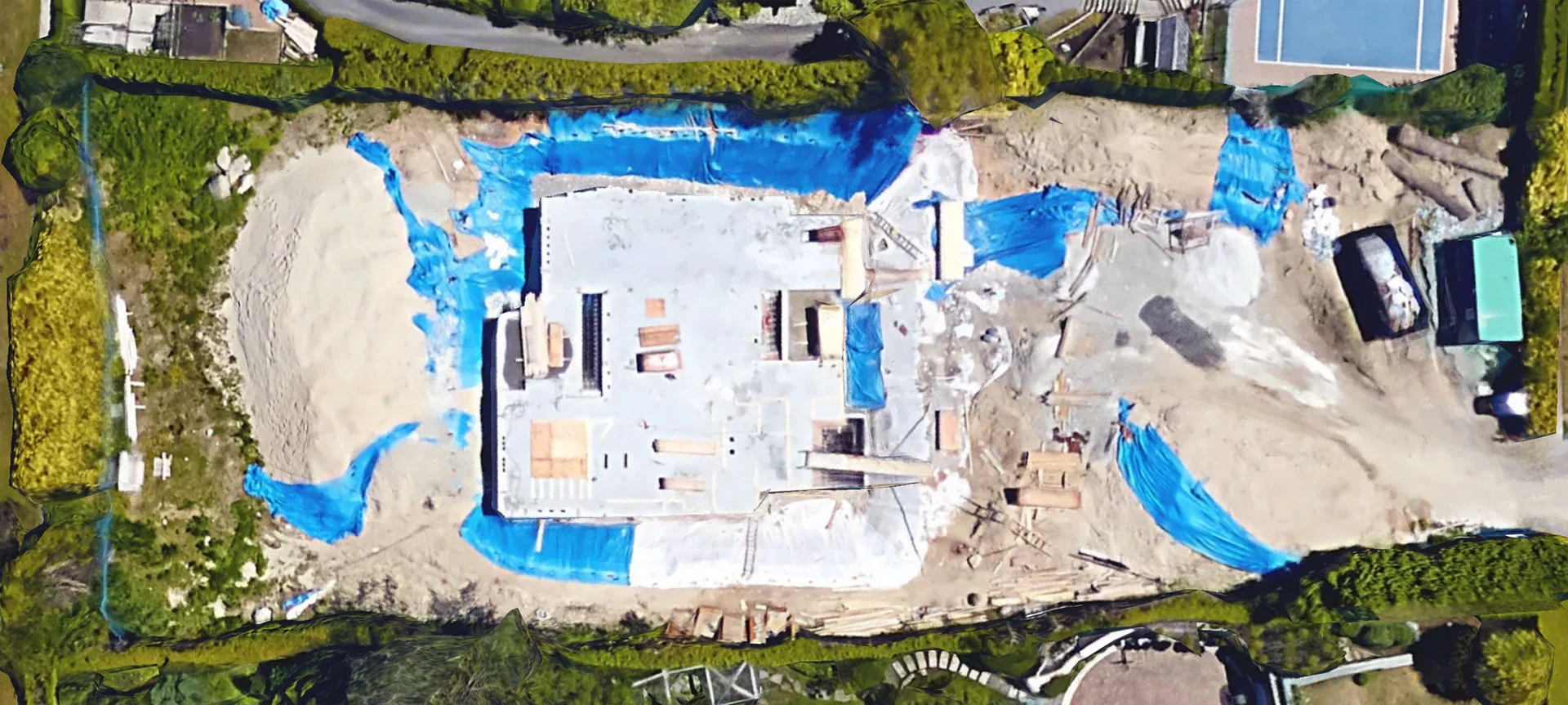
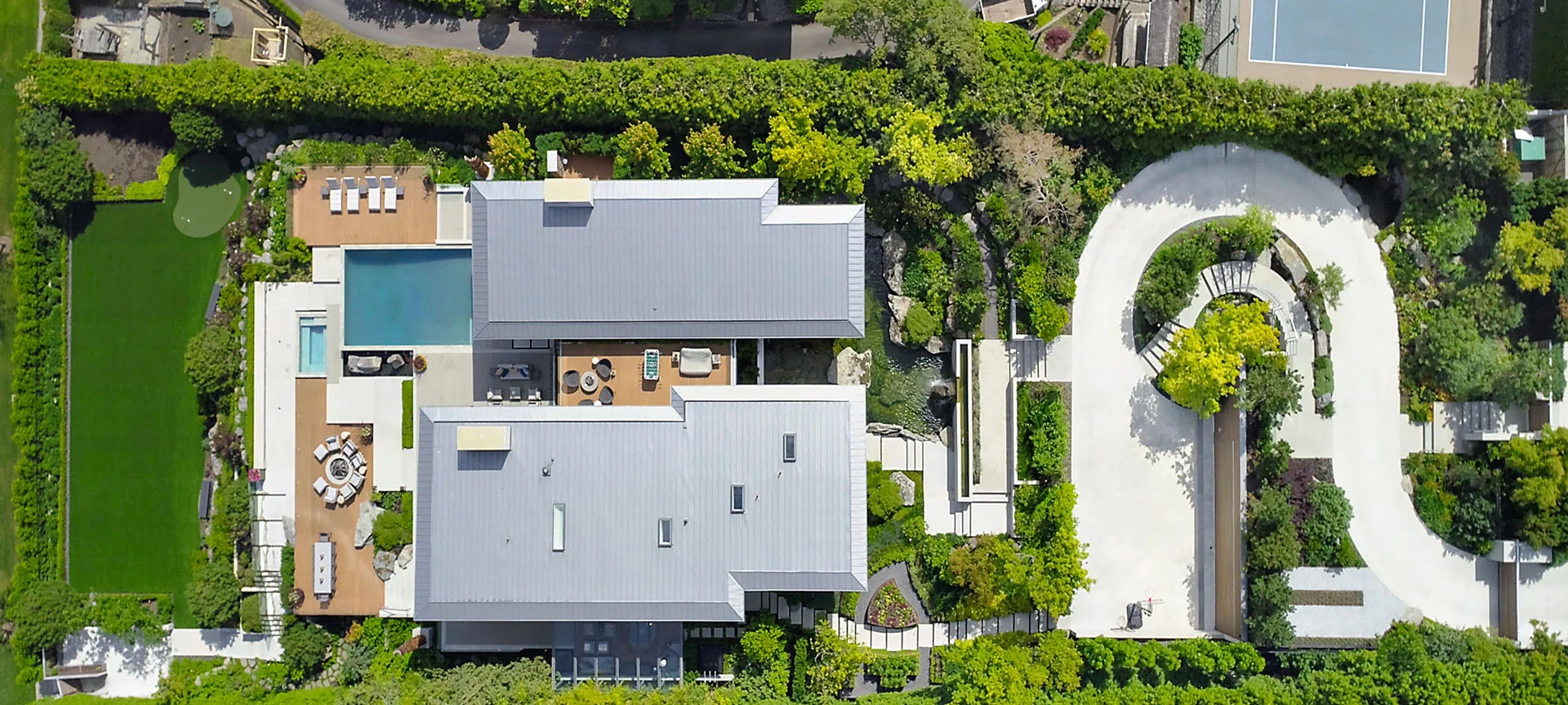
Our Work
Swick’s is a proud member of the following industry Organizations:
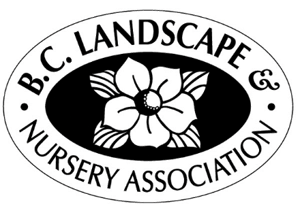



 Contact Us
Contact Us 
